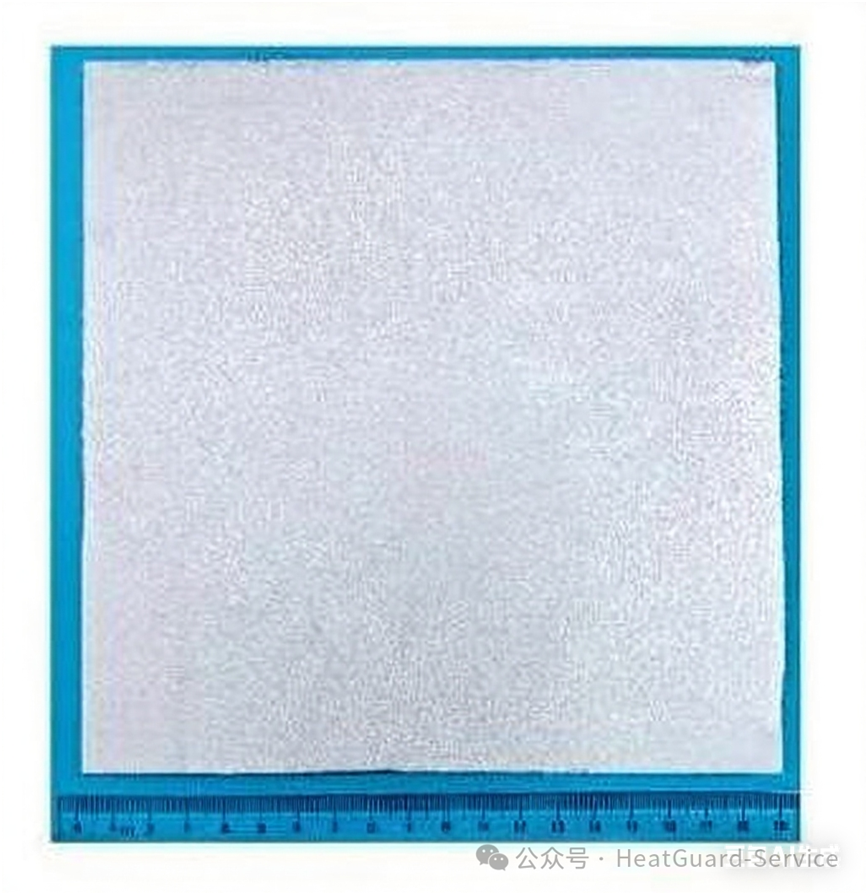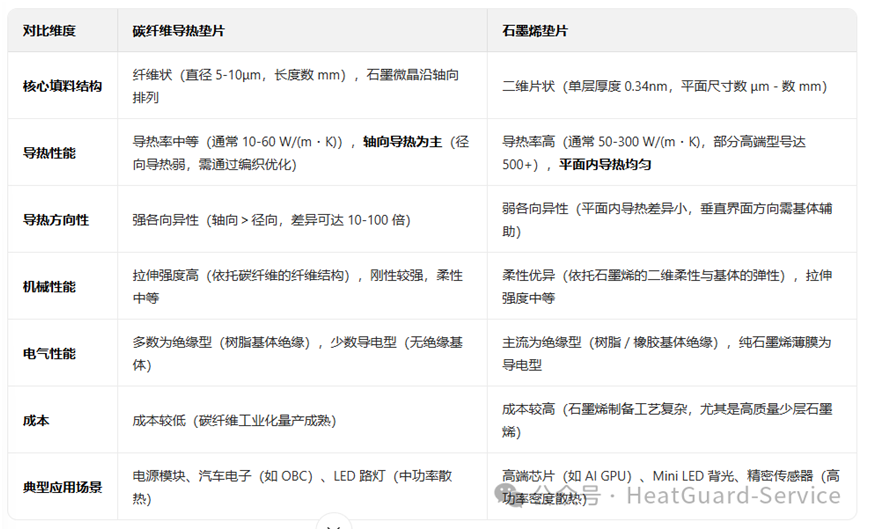Don't confuse anymore! 4-dimensional comparison of carbon fiber and graphene thermal pads, with clear reliability and attenuation at a glance
If the demand is for "medium power heat dissipation+low cost+high mechanical stability" (such as automotive electronics, industrial power supplies), carbon fiber thermal pads are a more practical choice with high reliability and controllable attenuation;
If the demand is for "high power density heat dissipation+flexible bonding" (such as high-end chips, Mini LEDs), graphene gaskets have more advantages, but high-quality models (controlling dispersion and substrate weather resistance) need to be selected to reduce attenuation risks;
China has continuously made breakthroughs in graphene gasket related technology and has its own patented technology. By using advanced directional technology to arrange graphene sheets in an orderly manner, the thermal conductivity efficiency is improved, and we have unique process equipment and technical patents, as well as a complete series of intellectual property rights. The new generation of longitudinal graphene thermal pads launched by it has advantages such as high rebound, ultra-low thermal resistance, and excellent reliability, and can be applied in fields such as smart chips, bypassing relevant Japanese patent technologies.
This product's graphene composite gasket is prepared through controllable foaming of graphene paper and surface metallization process of high-temperature treatment machine. It has no volatile components, no powder shedding, and good compatibility with white oil; Can replace metal indium sheets, applied in deep low-temperature Dewar scenarios, without "cold welding" problems, and the contact surface is easy to clean after disassembly.

The thermal resistance of graphene composite gasket is at a moderate level at 0.1 K/cm ² · W. But it is still superior to many traditional thermal conductive materials, and can meet high-power devices (such as new energy vehicle motor controllers, industrial power supplies, RF components, etc.), long-term maintenance free equipment (outdoor base stations), and scenarios that require in-plane heat dissipation and diffusion (multi chip PCB boards).
Basic Definition
1. Carbon fiber thermal pad
Carbon fiber thermal pad is a flexible thermal interface material (TIM) made by compounding carbon fiber as the core thermal filler with resin (such as epoxy resin, silicone resin) and other matrices.
Carbon fiber itself is a fibrous material formed by arranging carbon atoms in "graphite microcrystals" along the fiber axis, with significant anisotropy in thermal conductivity (high axial thermal conductivity, low radial thermal conductivity);
Gaskets achieve the function of "heat conduction+interface filling+electrical insulation (some models)" by optimizing the arrangement direction of carbon fibers (such as unidirectional and cross weaving), combined with the bonding and insulation effects of the matrix. They are mainly used for heat transfer of components such as chips, heat sinks, and casings in electronic devices.
2. Graphene gasket
Graphene gasket is a type of TIM made by using graphene (single layer or few layer graphite sheet) as the core thermal conductive filler, composite with resin, rubber or other substrates (or using a self-supporting structure of graphene film).
Graphene is a two-dimensional carbon material with a single atomic layer, with extremely high theoretical thermal conductivity (about 5000 W/(m · K)) and isotropic thermal conductivity in the plane (uniform thermal conductivity in the plane);
The gasket enhances the overall thermal conductivity efficiency through the high thermal conductivity of graphene, while relying on the substrate to achieve flexibility, insulation (most models), and interface adhesion. It is suitable for precision electronic components that require higher heat dissipation efficiency, such as high-end chips, Mini LEDs, and sensors.
Differential comparison

Reliability comparison
1、Carbon fiber thermal pad
Strong mechanical stability: the fiber structure of carbon fiber is closely combined with the resin matrix, which is not easy to crack and fall off under long-term cold and hot cycles (-40 ℃~125 ℃), and has excellent anti-aging performance;
Good weather resistance: Strong resistance to humidity and chemical corrosion (such as trace oil stains in electronic devices), suitable for harsh environments such as automobiles and industrial electronics;
High processing consistency: The carbon fiber mass production process is mature, with small fluctuations in parameters such as gasket thickness and thermal conductivity, and high batch reliability.
2、Graphene gasket
Excellent thermal stability: Graphene has high carbon carbon covalent bond energy, and its thermal conductivity remains almost unchanged under long-term high temperature (≤ 200 ℃), making it suitable for long-term operation of high-power chips
Good interface adhesion: The sheet-like structure of flexible substrate and graphene can better fill small interface gaps (such as gaps<50 μ m), making it less prone to interface separation due to vibration during long-term use;
Cold and hot shock resistance: Graphene with a two-dimensional structure can buffer the stress caused by cold and hot cycles, reducing the risk of gasket cracking.
Attenuation comparison
Attenuation refers to the degree of decrease in thermal conductivity after long-term use, influenced by factors such as the bonding state between the filler and matrix and environmental aging
1. Carbon fiber thermal pad
Reason for attenuation:
Mainly due to matrix aging (such as thermal oxidative aging of resin at high temperatures and brittleness at low temperatures), the bonding strength between carbon fiber and matrix decreases, and the interfacial thermal resistance increases; Secondly, the slight displacement of carbon fiber arrangement under long-term vibration weakens the axial thermal conductivity efficiency.
Degree of attenuation:
Under normal environmental conditions (-40 ℃~125 ℃, humidity<85%), the thermal conductivity attenuation after 1000 cycles of cold and heat is usually<10%; In harsh environments such as car engine compartments with temperatures above 150 ℃, attenuation may reach 15% -20%, but it can still meet the requirements of medium power equipment.
2. Graphene gasket
Reason for attenuation:
Mainly caused by graphene agglomeration (if dispersant fails) or matrix oil leakage (low-quality silicone resin matrix), leading to interruption of thermal conduction path; Secondly, the interface oxidation between graphene and the substrate under long-term high temperature conditions forms an oxide layer (such as graphene edge oxidation), increasing the interfacial thermal resistance.
Degree of attenuation:
High quality models (using well dispersed few layer graphene+anti-aging matrix) typically experience a thermal conductivity decay of less than 5% after 1000 cycles of cold and hot cycling;

